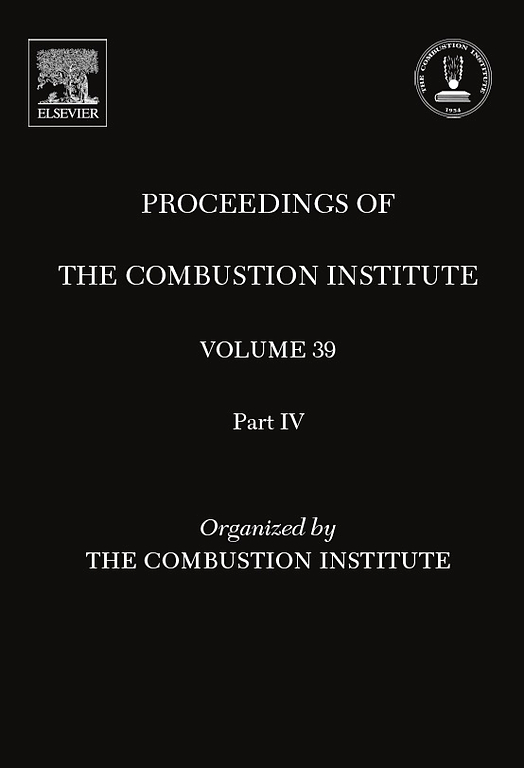利用半物理水平集模型重建荒地-城市界面火灾的破坏模式
IF 5.3
2区 工程技术
Q2 ENERGY & FUELS
引用次数: 0
摘要
野地-城市交接地带(WUI)的野地火灾威胁着城市结构。有效的景观管理依赖于预测工具,这些工具结合了有关结构属性和火灾事故强度的信息来量化风险。目前的计算模型往往存在不足,要么只关注野地火灾的蔓延,要么忽视了 WUI 中关键的火灾蔓延途径,包括直接火焰接触 (DFC)、辐射和火带。为了弥补这一不足,我们开展了一项计算研究,以调查 WUI 火灾蔓延情况,其中包括城市和野地景观,同时考虑到所有三种主要火灾蔓延途径。我们开发了一个二维景观尺度的城市火灾蔓延模型,并将其与野地火灾操作模型相结合,在两种情况下都采用了半物理水平集方法。我们使用该模型模拟了美国历史上的图布斯大火和托马斯大火。我们的模型对火灾周界的预测准确率超过 85%,对受损房屋的预测准确率约为 70%,其中 30% 以上的房屋被火带点燃。我们的模型首次以事件热通量图的形式对火灾强度进行了空间量化。在图布斯火灾中,入射热通量为 30 至 50 kW/m(DFC)和 5 至 25 kW/m(辐射),而在托马斯火灾中,入射热通量为 80 至 130 kW/m(DFC)和 10 至 40 kW/m(辐射)。这些数值与结构间火灾蔓延的大规模实验结果非常吻合。尽管该模型存在结构属性不均匀等局限性,但我们的研究结果凸显了该模型为各种应用提供一系列输出结果的潜力。该模型满足了整合野外和城市火灾蔓延过程的关键需求,并提供了对火灾蔓延主要机制的深入了解。这项工作为模拟 WUI 火灾提供了前景广阔的工具,有助于制定减轻火灾的策略。本文章由计算机程序翻译,如有差异,请以英文原文为准。
Reconstructing modes of destruction in wildland–urban interface fires using a semi-physical level-set model
Wildland fires in the wildland–urban interface (WUI) threaten urban structures. Effective landscape management relies on predictive tools that incorporate information on structural attributes and fire incident intensity to quantify the risks. Current computational models often fall short, either focusing solely on wildland fire spread or neglecting critical fire spread pathways in the WUI, including direct flame contact (DFC), radiation, and firebrands. To address this gap, we conducted a computational study to investigate WUI fire spread, encompassing both urban and wildland landscapes while accounting for all three primary fire spread pathways. We developed a two-dimensional landscape-scale model for urban fire spread and integrated it with an operational model for wildland fires, employing semi-physical level set approaches in both cases. We used the model to simulate the Tubbs and Thomas Fires, historical WUI fires in the United States. Our model’s predictions achieved an accuracy exceeding 85% for fire perimeters and around 70% for the damaged houses, with over 30% of the houses ignited by firebrands. For the first time, our model spatially quantified the fire intensity of the events in terms of incident heat flux maps. In the Tubbs Fire, this ranged from 30 to 50 kW/m (DFC) and 5 to 25 kW/m (radiation), while it is 80 to 130 kW/m (DFC) and 10 to 40 kW/m (radiation) in the Thomas Fire. These values closely align with large-scale experiments on structure-to-structure fire spread. Despite limitations in the model, such as the nonuniformity of structural properties, our findings underscore its potential to provide a range of outputs for various applications. The model addresses a critical need for integrating wildland and urban fire spread processes and offers insight into primary mechanisms for fire spread. This work provides promising tools for simulating WUI fires and can aid in the development of strategies to mitigate them.
求助全文
通过发布文献求助,成功后即可免费获取论文全文。
去求助
来源期刊

Proceedings of the Combustion Institute
工程技术-工程:化工
CiteScore
7.00
自引率
0.00%
发文量
420
审稿时长
3.0 months
期刊介绍:
The Proceedings of the Combustion Institute contains forefront contributions in fundamentals and applications of combustion science. For more than 50 years, the Combustion Institute has served as the peak international society for dissemination of scientific and technical research in the combustion field. In addition to author submissions, the Proceedings of the Combustion Institute includes the Institute''s prestigious invited strategic and topical reviews that represent indispensable resources for emergent research in the field. All papers are subjected to rigorous peer review.
Research papers and invited topical reviews; Reaction Kinetics; Soot, PAH, and other large molecules; Diagnostics; Laminar Flames; Turbulent Flames; Heterogeneous Combustion; Spray and Droplet Combustion; Detonations, Explosions & Supersonic Combustion; Fire Research; Stationary Combustion Systems; IC Engine and Gas Turbine Combustion; New Technology Concepts
The electronic version of Proceedings of the Combustion Institute contains supplemental material such as reaction mechanisms, illustrating movies, and other data.
 求助内容:
求助内容: 应助结果提醒方式:
应助结果提醒方式:


